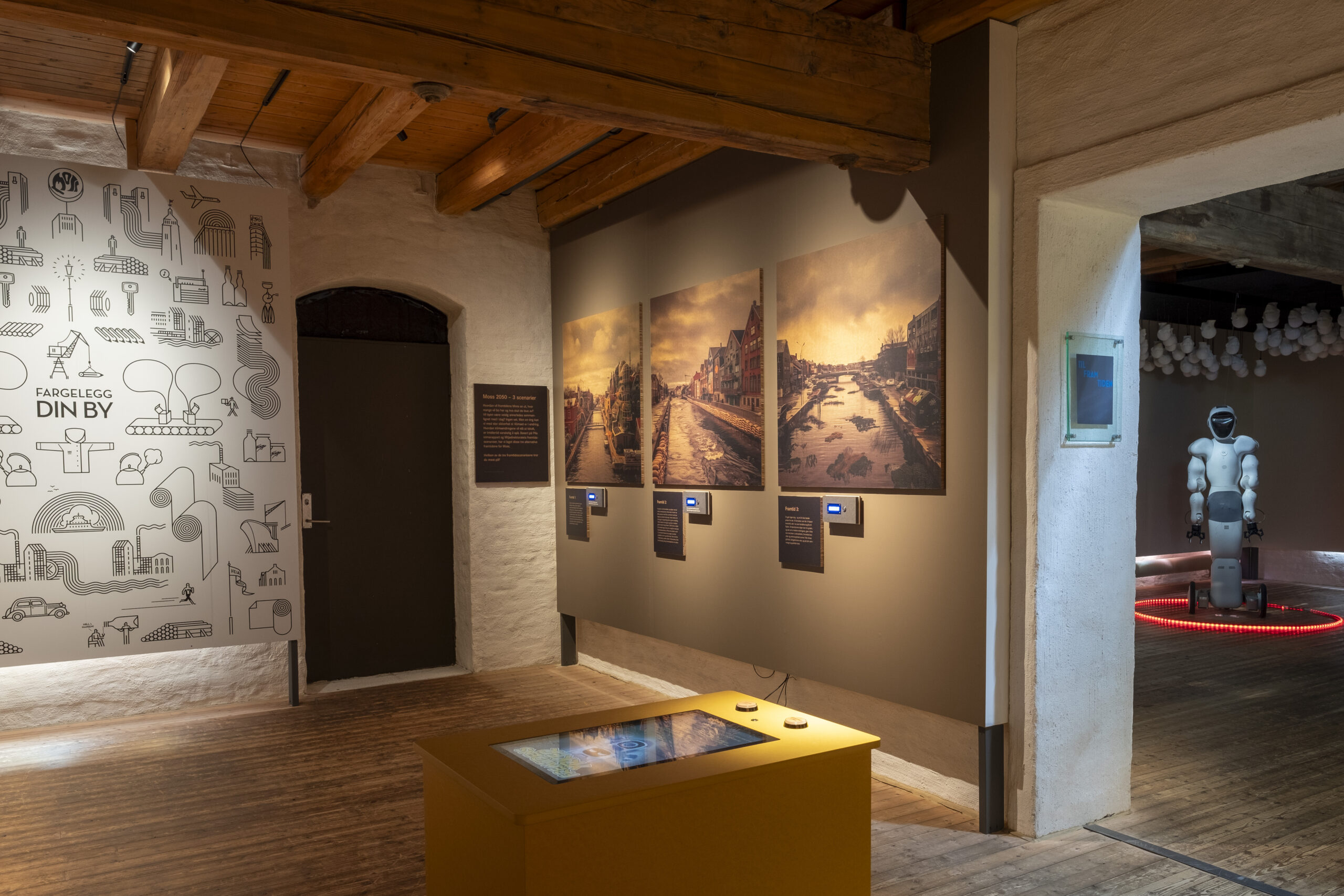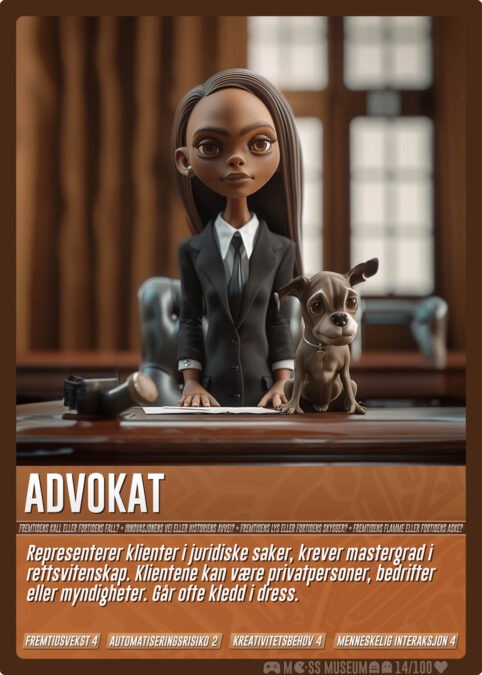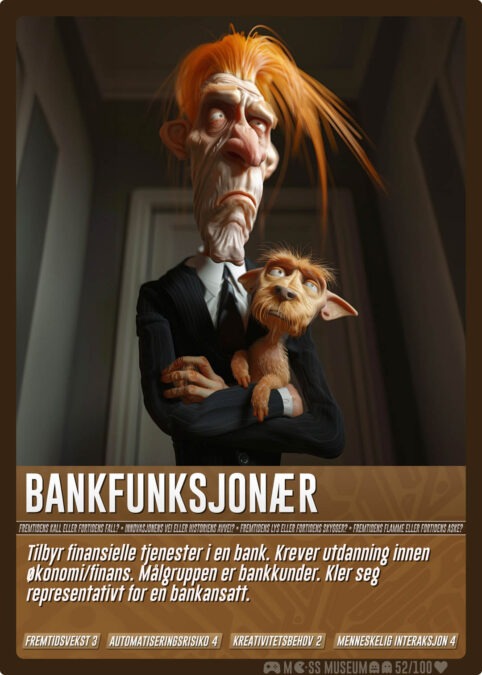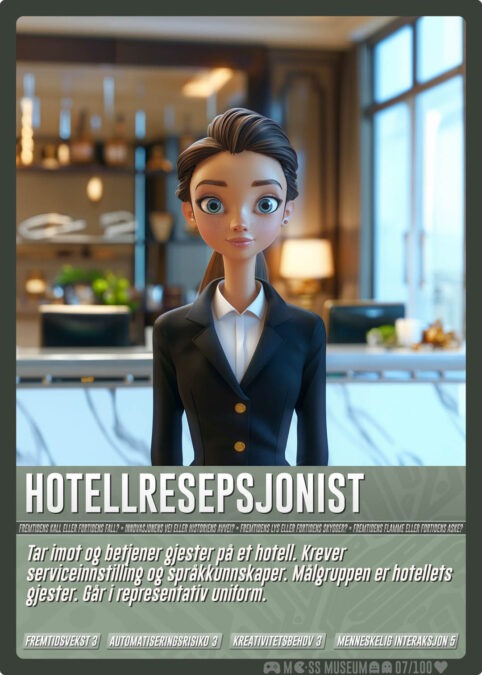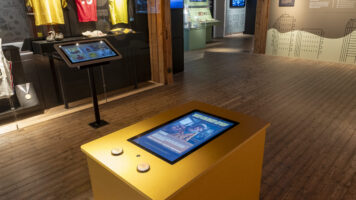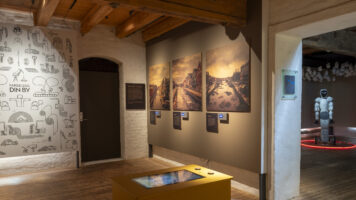I’ve been working on something really special for a while now, and I’m finally bursting to share it with you! Over at the Moss By og Industrimuseum, we’ve just launched an interactive exhibit that’s a bit different from the usual historical fare. It’s called “Fremtidens Yrker” (Careers of the Future), and honestly, it’s been a blast (and a bit of a brain-bender!) to bring to life.
Forget quietly observing relics from the past – this exhibit throws you headfirst into thinking about tomorrow’s world of work. We’re talking about how AI and automation are already changing the game, and what that might mean for the jobs of the future. Think of it as part game, part social commentary, all wrapped up in a seriously engaging digital experience.
As the producer of this installation, I’ve been involved in every step of the journey, from the initial crazy ideas to the late-night coding sessions (more on that later!). It’s been an incredible process, and I wanted to give you a little peek behind the curtain and tell you why I’m so excited about it.
So, What Exactly Is “Fremtidens Yrker”?
At its core, the exhibit tackles a question we’ve all probably pondered: What will people actually do for a living in the coming years and decades?
To get visitors thinking, we’ve created this bright, inviting console where you can swipe through a whole range of jobs – some familiar, some surprising, and a few that are downright futuristic. It’s a simple swipe-left-or-right game: is this job heading for the history books, or does it have a bright future?
But here’s where it gets really interesting (and where a lot of our energy went!): an AI has already made its predictions. The challenge? See how your instincts match up against the machine’s analysis. Get it right, and you score points!
It’s been designed to be part quiz, part thought experiment, and somehow it manages to make complex topics like job displacement and automation feel approachable – even fun. Honestly, seeing people engage with it has been incredibly rewarding.
We’ve also woven in some thought-provoking questions that I’ve personally been wrestling with:
- Will those amazing coffee robots eventually take over from our beloved baristas? (I hope not!)
- Is coding still the golden ticket in a world where AI can write code too?
- Can artists and creatives not just survive but thrive alongside intelligent machines?
For me, it’s been about creating a space for a different kind of conversation about the future of work – less about fear and more about curiosity and finding solutions together.
How Did This Exhibit Come Together?
1. Leaning on Our Digital Friends:
Behind the scenes, this exhibit is powered by some seriously cool tech. But it wasn’t just about throwing in the latest gadgets. We strategically used tools like ChatGPT and MidJourney to help shape the content and visuals.
- ChatGPT was invaluable during the brainstorming and design phases, helping us map out potential career trajectories and craft those concise, engaging explanations you see in the exhibit.
- MidJourney gave the whole thing its visual punch, generating those vibrant, almost Pixar-esque illustrations that we hoped would appeal to everyone, especially younger visitors, without dumbing things down.
The goal was to create a vibe that’s fun, accessible, and just a little bit… well, like stepping into the future.
2. The Nitty-Gritty Tech
Under the hood, the setup is something I’m actually quite proud of:
- A trusty Raspberry Pi is the brains of the operation, handling everything from those satisfying swipes to keeping score.
- I even got to dust off my coding skills and write some custom Python code to make sure the whole thing runs like a dream.
- We wanted it to be truly interactive for everyone, so we incorporated tactile buttons (thanks to Arduino) that make it easy for visitors of all abilities to play along.
It’s a compact but carefully engineered installation, designed to spark conversation and thought without needing a tech background to enjoy it. Seeing people of all ages interact with it has been a real highlight for me.
Why Make the Future of Work a Game? (My Philosophy!)
Let’s face it: the phrase “future of work” can sound pretty dry and academic. My goal was to flip that on its head with “Fremtidens Yrker.”
Instead of passively absorbing information, you get to actively engage with the topic. You make quick choices, get immediate feedback, and hopefully, start forming your own opinions on things you might not have considered before.
Here’s how the interaction works:
- Each profession pops up on screen with a short, engaging description and an AI-generated image.
- You make the call: future-proof or not?
- The system then reveals the AI’s prediction and the reasoning behind it.
- Points accumulate as you go, adding a little friendly competitive edge.
Honestly, you could spend five minutes getting a quick overview, or really dive in for an hour, debating the future of different professions. It’s designed to be flexible and engaging for everyone.
Connecting the Dots: Past, Present, and Future in Moss
This exhibit isn’t happening in a vacuum. It’s actually part of a larger, really thoughtful project at the Moss Museum called “De som var, vi som er” – a look at how the local community has evolved from its industrial roots.
Previous phases of the exhibit explored the rise of factories, machinery, and the physical transformation of Moss. “Fremtidens Yrker” builds on that foundation by asking that crucial “what’s next?” question – not just for Moss, but for all of us.
It’s about showing how innovation has always been a part of our story, from those early steam engines to today’s smart algorithms. And just like in the past, it’s not just the technology that changes – it’s people, our values, and our communities.
Why This Matters to Me (And Hopefully to You Too)
Ultimately, this exhibit isn’t about predicting the future with absolute certainty – it’s about starting a conversation. And that’s what makes it so important to me.
I hope it encourages visitors, especially young people, to look beyond specific job titles and start thinking about the fundamental skills they’ll need, the importance of adaptability, and how we all fit into an increasingly automated world.
Whether you’re a teenager exploring career paths, a parent thinking about your child’s future, or just someone curious about how tech is reshaping our lives, “Fremtidens Yrker” offers a moment to pause, reflect, and maybe even feel a little bit hopeful amidst all the change.
Because while AI is undoubtedly changing things, exhibits like this remind us that we still have a hand in shaping what comes next. And I’m incredibly proud to have played a part in bringing that conversation to life here in Moss. Come check it out if you get the chance – I’d love to hear what you think!

